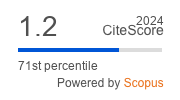The Differentiation of Taxonomic Units in English Diplomatic Discourse
Keywords:
diplomatic communication, diplomatic discourse, genre, taxonomic unit, term, text type.Abstract
English diplomatic discourse is studied as the functional environment of terms utilized in the sphere of diplomacy. The comprehensive analysis of this discourse involves a proposed differentiation based on the taxonomic units of genre, register, and text type. English diplomatic discourse as a whole has been divided into three genres: diplomatic correspondence, diplomatic texts with a high degree of standardization, and oral diplomatic genres. The paper singles out two types of registers―the register of parity and the register of command―and analyzes the correlation of the registers and genres of English diplomatic discourse. The type of text is investigated as one of the main taxonomic units. Contractual, informative, instructive, argumentative, regulatory, authoritarian, and courtesive types of texts are singled out. This division of diplomatic texts is performed on the basis of the communicative-pragmatic criterion, the criterion of sphere, and the criterion of intertextuality. It is demonstrated how frequency of occurrence of certain terms plays a significant role in associating diplomatic discourse texts with specific types. Data are provided with regard to the correlation of text types and genres of diplomatic communication. The proposed differentiation of English diplomatic texts in terms of taxonomic units suggests that the type of text is a fragment of discourse, and that the discourse of each genre is heterogeneous with regard to the types of texts that occur in it.
References
- Bakhtin, M. (1979). Estetika Slovesnoho Tvorchestva [Aesthetics of Verbal Creativity].
Moscow: Iskustvo. - Batsevych, F. (2006). Movlennyevyi zhanr i rehistr dyskursu [Speech genre and register of
discourse]. Visnyk Lvivskoho Universytetu, 38, 86–96. - Biber, D. (1989). Typology of English texts. Linguistics, 27, 3–43.
- Couture, B. (1986). Effective ideation in written text: a functional approach to clarity and
exigence. Functional Approaches to Writing: Research Perspective, 69–92. - Сrystal, D. (1992). An Encyclopedic Dictionary of Language and Languages. London.
- Halliday, M. A. K. (1978). Language as Social Semiotics. The Social Interpretation of
Language and Meaning. L.: Edward Arnold. - Karasik, V. (2000). O tipakh diskursa [On the types of discourse]. Yazykovaya Lichnost:
Institutsyonalnyi I Personalnyi Diskurs, 5–20. - Kibrik, A. (2009). Modus, zhanr i drugie parametry klasifikatsii diskursov [Modus, genre and
other parameters of discourse classification]. Voprosy Yazykoznaniya, 2, 3–21. - Lee, D. (2001). Genre, registers, text types, domains and styles: clarifying the concepts and
navigating a path through the BNC jungle. Language Learning and Technology, 5(3), 37–72. - Longacre, R. (1992). The Discourse Strategy of an Appeals Letter. Amsterdam: Benjamins.
- Martin, J. R. (1985). Factual Writing: Exploring and Challenging Social Reality. Oxford:
Oxford University Press. - Selivanova, O. (2006). Suchasna Linhvistyka: Terminolohichna Entsyklopediya [Modern
Linguistics: Terminological Encyclopaedia]. Poltava: Dovkillya. - Swales, J. M. (2004). Research Genres. Exploration and Applications. Cambridge: Cambridge
University Press.







 Creative Commons «Attribution» 4.0
Creative Commons «Attribution» 4.0